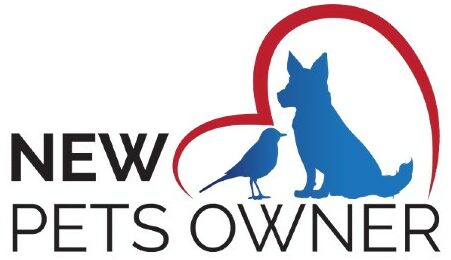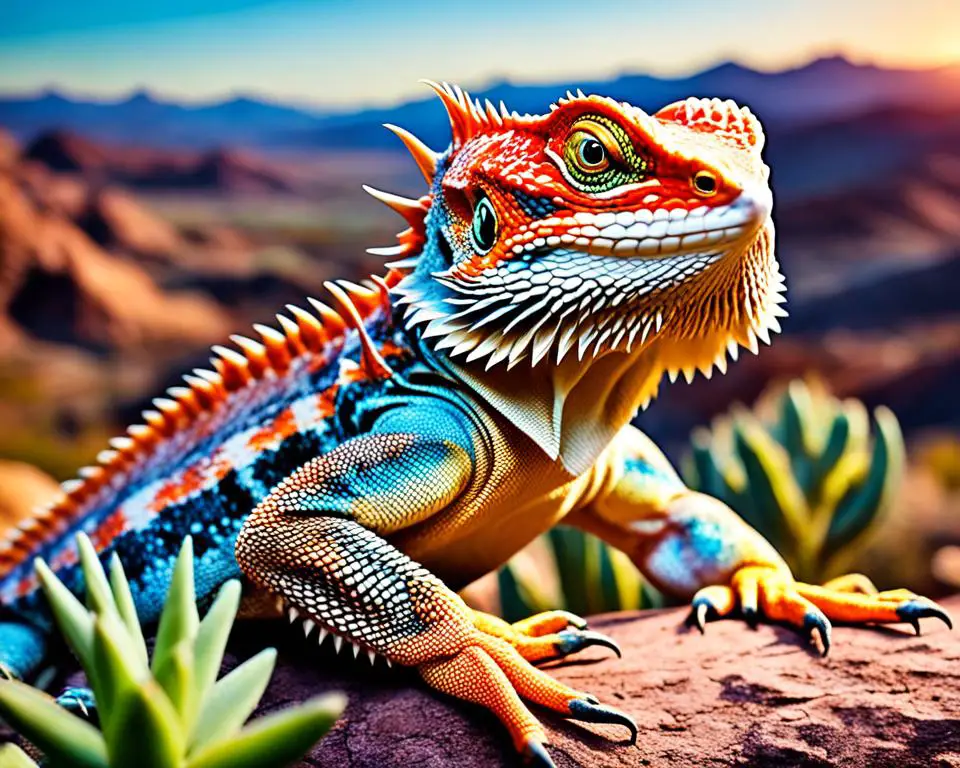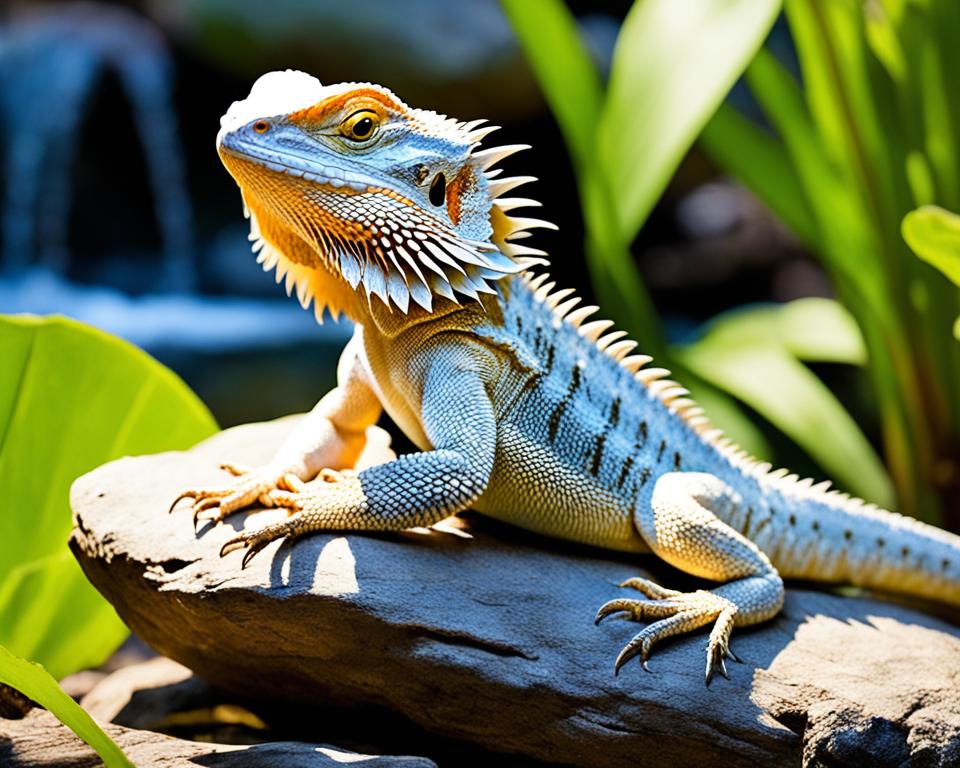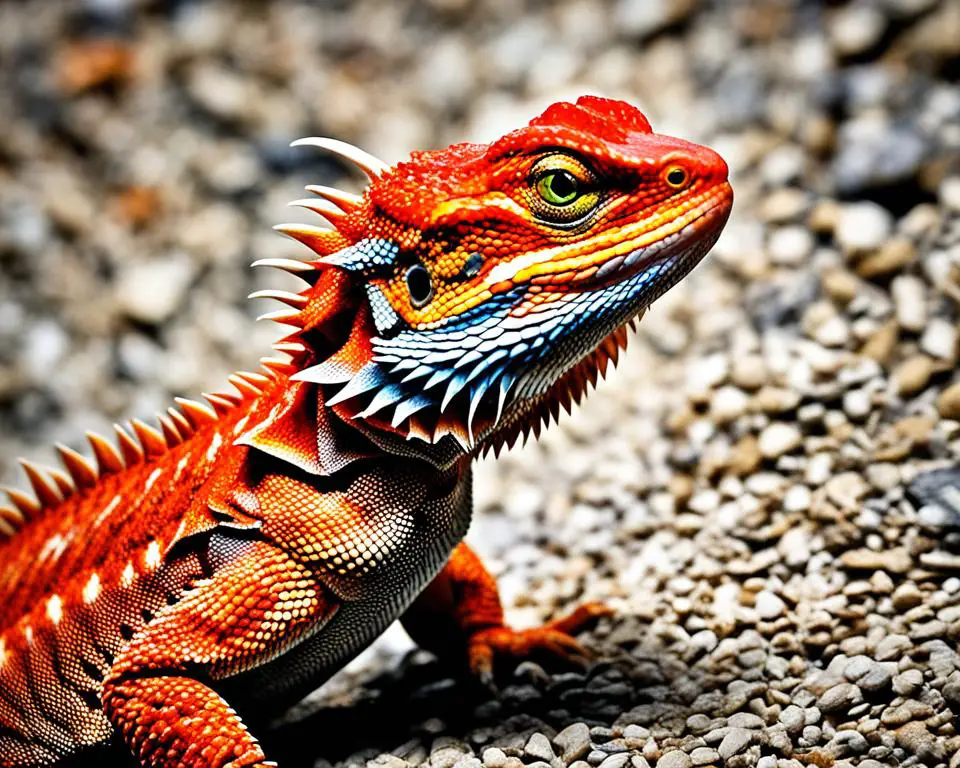Since the 1990s, bearded dragon fans in the United States have made these reptiles popular pets. This journey has uncovered 11 different bearded dragon morphs. Each morph has its own unique colors, patterns, and looks that set it apart from wild ones. The orange morph is especially striking with its bright colors.
This guide will explore the world of orange bearded dragons. It will cover their beautiful looks, their special care needs, and how to get them ethically. Let’s dive into the world of these exotic pets.
Introduction to Bearded Dragon Morphs
Bearded dragon morphs are fascinating with their unique looks and traits. They come in various sizes, patterns, colors, and scales. Breeders have discovered many morphs, from the traditional spiked dragons to the smooth Silkbacks. Each morph has its own story and appeals to different people, making sure there’s a morph for every enthusiast.
Understanding Morphs
It’s key to know what makes bearded dragon morphs special. They are often sorted by their patterns and colors. The standard dragon looks like its wild Australian cousins. Silkback dragons lack scales, needing careful care because they are so delicate.
Translucent dragons have almost see-through scales and dark eyes. Hypomelanistic dragons have soft, pastel colors. Paradox morphs have white, purple, or blue spots from complex breeding.
Patterns and Colors
Bearded Dragon Patterns refer to their scale and spike designs. The Dunner morph has scales that grow in different directions. Pattern-less morphs like the Witblits or Zero have a simple beauty.
Bearded Dragon Colors can change with age, mood, or environment. Citrus bearded dragons have bright orange and yellow colors, sometimes with tiger-like stripes. Their changing colors amaze their owners. White and Snow morphs are also popular for their unique look and genetic traits.
Types of Bearded Dragon Color Morphs
Bearded dragons have many morphs, each with its own look and genes. The Standard Bearded Dragon, Leatherback Bearded Dragon, and Dunner Bearded Dragon are notable for their unique traits.
Standard Morph
The Standard Bearded Dragon looks like the wild ones. They have green, tan, yellow, and red colors. They have spikes on their back, sides, and head.
They are the cheapest to buy and very popular pets.
Leatherback Morph
The Leatherback Bearded Dragon is rare and loved for its smooth skin and fewer spikes. It has bright colors. Its fewer scales make its colors pop, making it a favorite.
Dunner Morph
The Dunner Bearded Dragon was named after its creator. It’s known for its unique scale pattern. Unlike standard morphs, its scales point in different directions.
It often has more scales on its tail and stomach. This gives it a special look. Its scales add texture and make it interesting to look at, making it popular with collectors and breeders.
Exploring Bearded Dragon Orange Morph
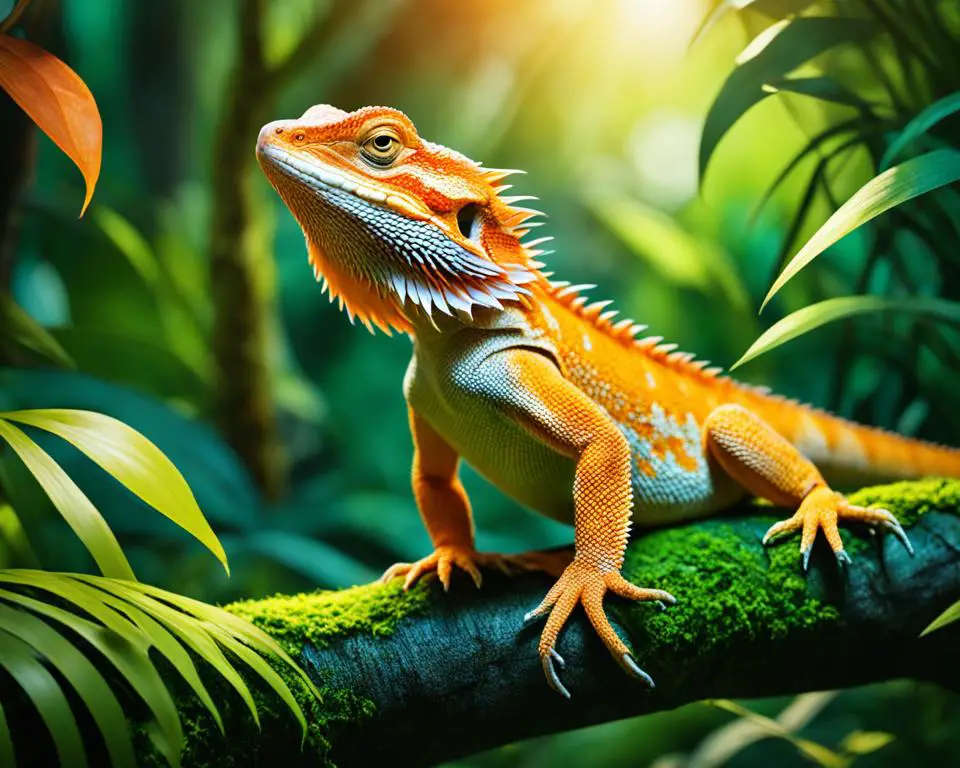
The Orange Bearded Dragon Morph is a stunning variety known for its vibrant colors. These colors range from peach to fiery orange. Found in Australia, these lizards grow 16 to 24 inches long. They are loved for being gentle and easy to care for.
Characteristics
Orange bearded dragons stand out with their unique colors and size. They are often tan or brown but can also be orange thanks to selective breeding. The Central or inland orange bearded dragon (Pogona vitticeps) is the most common type found in the market.
Prices for these dragons range from $189.95 to $999.95, depending on their age and rarity. They are raised to be calm and are shipped in special containers with a health guarantee for 7 days. In captivity, they can live up to 20 years, but usually 6-10 years.
Care Requirements
To keep orange bearded dragons healthy, their habitat and diet need special attention. They should live in a 40 Breeder Zilla Critter Cage with the right temperature. Daytime should be between 100-110°F, and nights should be 70-75°F.
It’s important to clean their home every two to three months to keep it clean. These dragons eat insects like crickets and mealworms, as well as vegetables high in calcium. Learning about their care needs is key to having a happy, healthy pet.
Visual Appeal of Orange Morphs
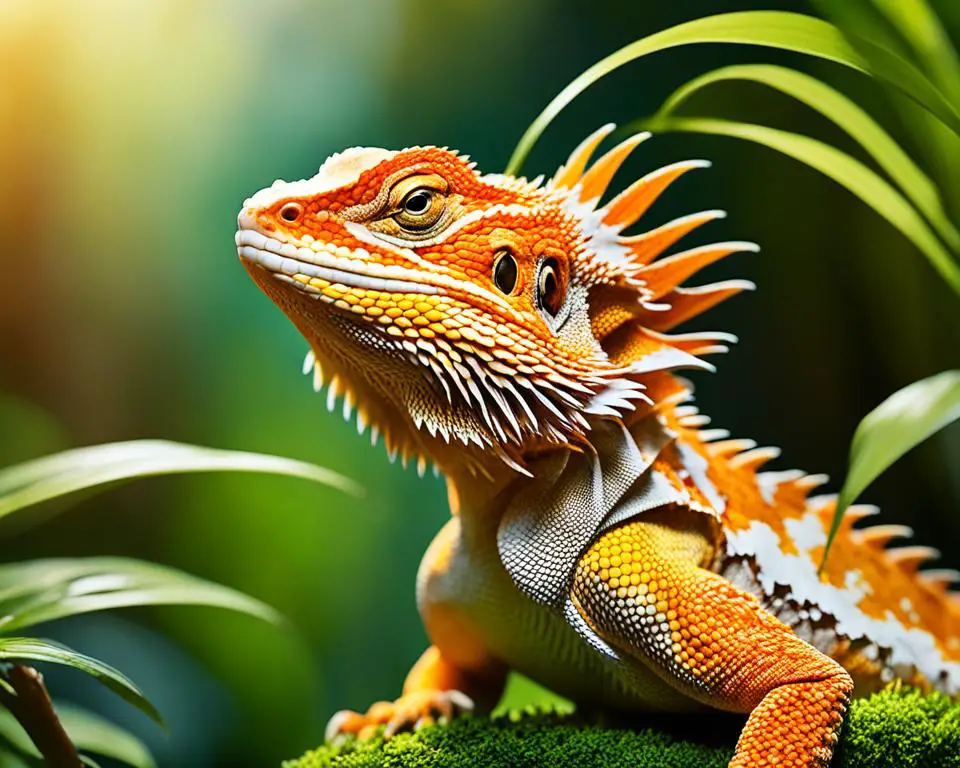
The Orange Bearded Dragon Aesthetics amaze fans and collectors. These vibrant pet dragons are known for their wide range of colors. They go from a soft peach to a deep, true orange. This bright orange color comes from careful breeding and is highly sought after by bearded dragon collectors.
Several genetic traits make orange morphs look stunning. Hypomelanism (Hypo) is a rare mutation that lowers melanin levels in bearded dragons. Hypo dragons, being homozygous for this trait, have clearer nails and brighter scales. This lack of melanin leads to their bright and glowing colors.
The translucent (Trans) mutation also adds to their beauty, especially in young dragons. These trans morphs have almost clear skin and solid black eyes, giving them an otherworldly look. As they grow, their blue underbellies and eye colors may change, adding more to their allure.
From the paradox morph with its random color patches to the dunner morph with its unique spots and stripes, each type adds to the Orange Bearded Dragon Aesthetics. The dunner morph changes the body’s pattern, moving away from typical stripes. This highlights the unique and striking looks of these dragons.
| Mutation | Visual Characteristics |
|---|---|
| Hypomelanism (Hypo) | Less melanin, clear nails, vibrant scales |
| Translucent (Trans) | Partially clear skin, solid black eyes, potential blue underbelly |
| Paradox | Random color patches, unique appearance |
| Dunner | Spots and stripes, bigger feet, unique scales |
The bright colors of these dragons not only make them look great but also show their health and genetic purity. As more people become bearded dragon collectors, the love for these vibrant pet dragons grows. Their beauty shows the hard work and knowledge in breeding and caring for them.
Breeding Practices for Orange Bearded Dragons
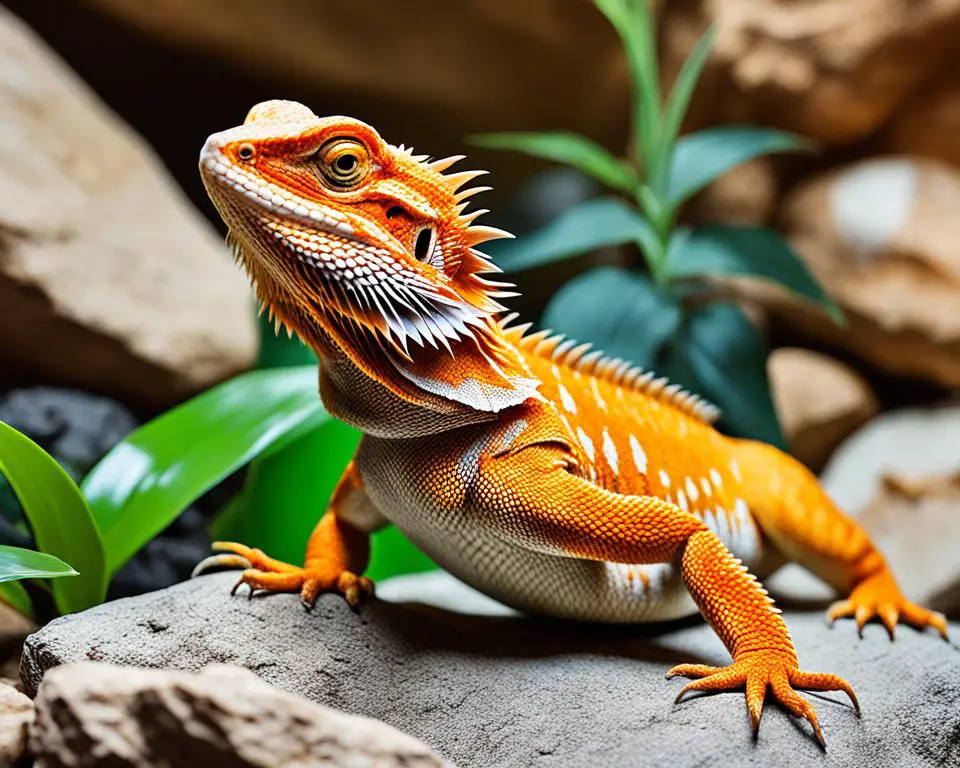
To get stunning orange morphs, breeders use Selective Breeding Techniques. They carefully pick bearded dragons with the right color traits. This way, the babies get the bright orange colors, making more beautiful orange dragons.
Selective Breeding
Selective breeding means picking dragons for their color and genes. Breeders pair dragons with great orange colors to pass on these traits. This method looks at both looks and health, focusing on Bearded Dragon Genetics.
Ethical Considerations
Ethical Bearded Dragon Breeding is key. Breeders make sure their practices don’t harm the dragons. For example, silkback morphs lack scales, making them more vulnerable to health problems. Ethical breeders aim to avoid these genetic issues and keep the dragons healthy.
Breeders should think about the dragons’ health over making money. They should encourage adoption over buying from pet stores. This helps reduce the need for more breeding and keeps the dragons safe.
Habitat and Care for Orange Morph Bearded Dragons
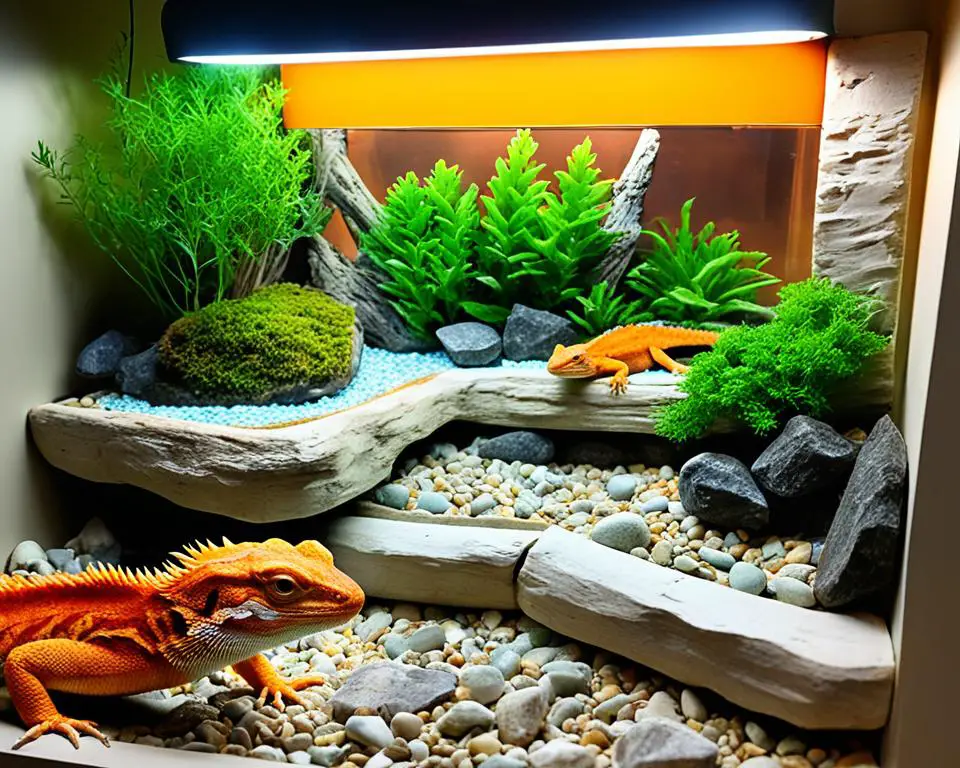
Looking after your orange morph bearded dragon starts with a great environment and regular care.
Enclosure Setup
A big, well-made bearded dragon enclosure is key. Adults need at least a 40-gallon tank, but 75 gallons is better. Don’t use reptile carpet or sand mats as they’re not good choices. Instead, create a natural look with hiding places and climbing branches. This makes their home feel more like their natural habitat.
Feeding and Nutrition
Feeding your bearded dragon right is important for their color and health. Young ones eat insects and plants, while adults mostly eat plants. They should get lots of leafy greens, carrots, squash, and peas every day. Treats like mango, kiwi, and berries are good too. Make sure to add crickets and roaches with calcium and multivitamins for a complete diet.
Lighting and Temperature
Keeping the right bearded dragon habitat temperature is key. The tank should have a cooler side of 75-85° Fahrenheit and a warmer side of 95-100° Fahrenheit for basking. This lets the dragon control its body temperature. Also, keep the humidity at 20%-40%. Good UVB lighting helps mimic day and night and prevents bone problems.
By paying attention to the bearded dragon’s enclosure, diet, and temperature, your orange morph will be happy and healthy. They’ll show off their beauty and live a full life.
Common Health Issues in Orange Morph Bearded Dragons
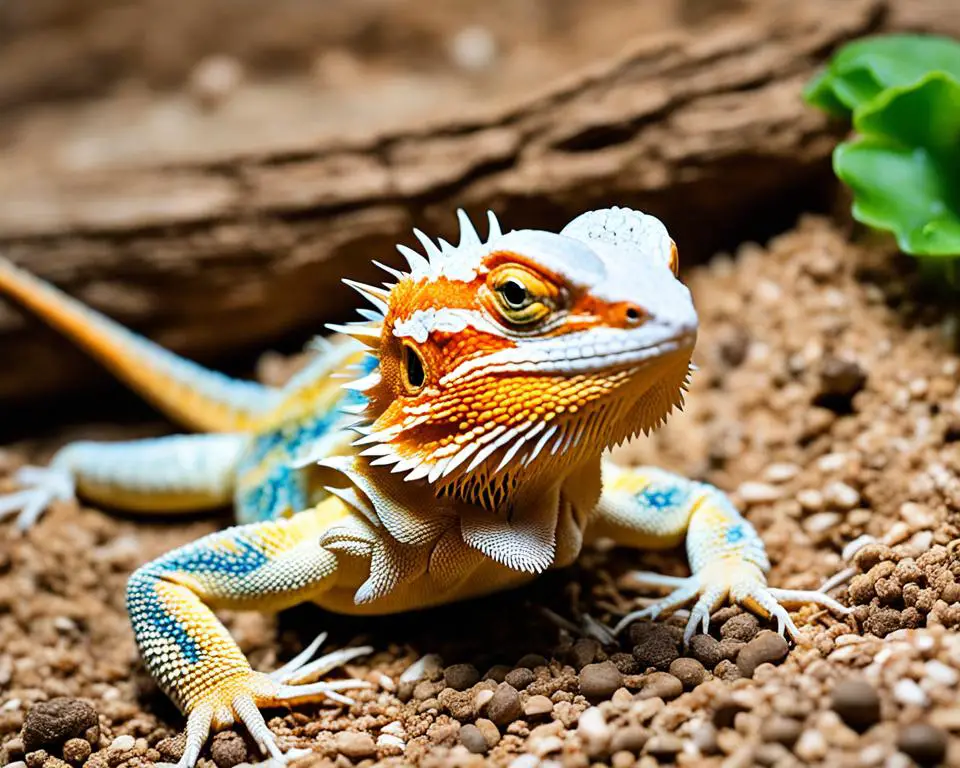
Orange morph bearded dragons can face health challenges like other colors. Spotting these issues early is key to your pet’s long life and health.
Identifying Signs of Illness
It’s important to watch for signs of illness in your bearded dragon. Look for color changes, like a warm light color meaning they’re happy, or a dark color meaning they’re stressed or cold. Red spots might mean injury, infection, or shedding problems.
Also, check their belly and tail for signs of digestive issues or diet problems. These can show up as color changes.
Behavior changes are also a big sign of illness. If your bearded dragon is tired, won’t eat, or moves strangely, they might be sick. Having a vet who knows about dragons is key to spotting these signs early.
Preventative Care Tips
To prevent illness in your bearded dragon, follow these tips:
- Balanced Diet: Feed them a mix of plants and live insects. Adults eat 2-3 times a week, while babies need food every day.
- Supplementation Schedule: Add supplements to their food. Use a calcium-rich multivitamin every feed, a calcium plus magnesium supplement every fourth feed, and a vitamin D3 supplement every eighth feed.
- Environment Conditions: Keep their home big enough (120 x 60 x 60cm). The basking spot should be 40-42°C, and the cool side around 25°C. Keep humidity at 30-40%.
- UVB Lighting: Use T5 bulbs for vitamin D3, which is vital for their health.
- Clean Habitat: Clean their home often to stop infections and reduce stress.
- Regular Veterinary Check-ups: Visit a vet who knows about dragons often to spot and treat health issues early.
Knowing about common health issues and how to prevent them keeps your orange morph bearded dragon healthy and bright.
Where to Find Bearded Dragon Orange Morphs
Looking for the perfect orange bearded dragon takes time and care. You can buy from breeders or adopt a rescue dragon. Making sure these reptiles are well taken care of is key.
Reputable Breeders
Find breeders who focus on health and genetics. They pick dragons with the best traits to ensure healthy, colorful offspring. Orange bearded dragon prices are usually mid-range, making them a good choice for many.
For more info on different morphs, including orange ones, talking to breeders is helpful.
Adoption and Rescue Options
Rescue bearded dragons are another option. Shelters and rescues have them, often from bad situations. Adopting is a great way to give a loving home to a dragon in need.
Adoption means you’re giving a loving home to a dragon. Make sure the rescue is ethical and cares for its reptiles well.
Choosing a breeder or rescue, focus on ethics and the dragon’s welfare. Being informed and making thoughtful choices will make owning a pet rewarding.
Learn more about morph color patterns and what makes orange morphs special.
Conclusion
In this guide, we’ve looked into the world of bearded dragon morphs, focusing on the vibrant orange ones. We covered everything from their unique traits to how to care for them. This guide has given you a deep look into choosing and caring for these amazing reptiles.
Our journey through bearded dragon care reminded us of the key things needed for their well-being. This includes the right habitat, UVB lighting, and a balanced diet. We also talked about the importance of genetic traits and ethical breeding. This shows the need for smart choices when getting these colorful pets.
To wrap up, picking the right bearded dragon morph is all about looking at both looks and health. With what we’ve shared, you’re ready to give your orange bearded dragon a happy and healthy life. You’ll also build a strong bond with your new pet.
Source Links
- A Beginner’s Guide to Bearded Dragon Colors & Morphs
- Bearded Dragon Morphs, Colors & Patterns
- COLORS & MORPHS
- What morph is this?
- Exploring the Stunning Colors of Bearded Dragons
- Central bearded dragon
- What Morphs Do Bearded Dragons Come In?
- Types of Bearded Dragons » View Different Types, Colors, & Species
- orange bearded dragon
- The Ultimate Guide to Bearded Dragons
- Everything you need to know about bearded dragon morphs – ReptileData
- A Guide to Bearded Dragon Mutations and Genetic Traits — HereBDragons.com
- 22 Types of Bearded Dragon Morphs & Colors (With Pictures!)
- Bearded Dragon Care — Orange Grove Animal Hospital – Tucson
- Breeding Bearded Dragons – Mating to Egg laying
- Bearded Dragon Care Guide
- Bearded Dragon Care Guide – Tips, Supplies, and FAQs | PetSmart
- Bearded Dragon Care Guide | Wiki | Reptiles Amino
- Citrus Bearded Dragon: Facts, Info, Pictures & Care Guide | PangoVet
- 7 Things Owners Need to Know About Bearded Dragon Colors
- Bearded dragon, Pogona vitticeps, care sheet
- Orange Bearded Dragon
- Discover the Importance of Bearded Dragon Orange Around Eyes
- Can Bearded Dragons Eat Oranges?
- Care for Bearded Dragons | Oak Hill Animal Hospital
